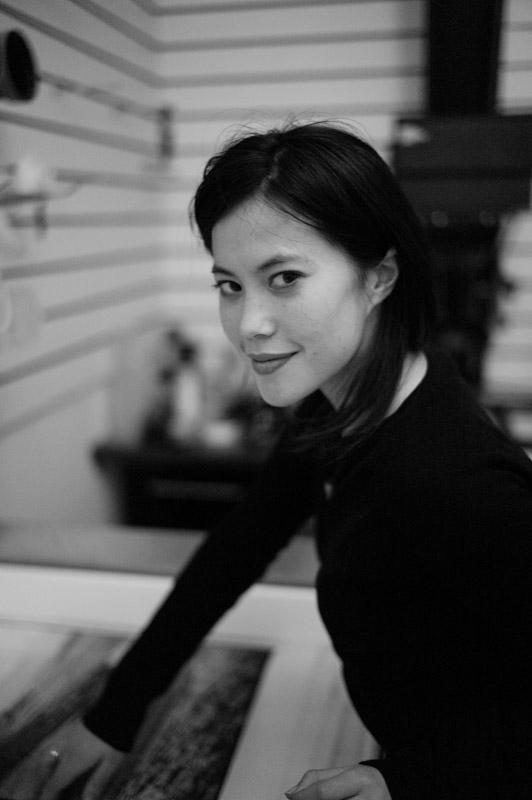The GetDPI Photography Forum
Great to see you here. Join our insightful photographic forum today and start tapping into a huge wealth of photographic knowledge. Completing our simple registration process will allow you to gain access to exclusive content, add your own topics and posts, share your work and connect with other members through your own private inbox! And don’t forget to say hi!
iso 2500
- Thread starter gooomz
- Start date
Godfrey
Well-known member
For all digital sensors: the higher the ISO, the less dynamic range you have to work with. Noise is the result of expecting DR to stay constant... It doesn't.any using iso 2500 with the M9 and getting good results?
in general as you bump the iso besides noise is anything else in image quality compromised like contrast color etc...
thanks for the help
Double Negative
Not Available
ISO 2,500 works just fine for me.
Check out an article I wrote, "Shooting In the Dark" and check out some photos from a recent event, where I used high ISO quite a bit (including a bunch at 2,500).
Check out an article I wrote, "Shooting In the Dark" and check out some photos from a recent event, where I used high ISO quite a bit (including a bunch at 2,500).
M
monkeini
Guest
My experience with the M8 is that ISO 2500 can look ok, but only when exposed generously, which half defeats the point. Content and tonal range of the image also have a big impact on the final output, of course. From the looks of it, the M9 does best the M8 in this area. Has anyone seen any reference to how much light is lost via the M9's acute angle micro lens array? It seems sensor sensitivity moved along enough between M8 and M9 to cope with this.
Stuart Richardson
Active member
I completely agree with Daniel -- I have rarely found much use for ISO 2500, but I have found the M9 to perform well in low light due to the easy-handholdability, great lenses, and the performance of the ISO's that the camera does provide.
Just a few days ago I took some shots in my darkroom, lit only by the safelight. It is a reasonably bright safelight, but still, it was ISO 1250 at f/1.4 for around 1/30th, and then pushed half a stop in lightroom (so ISO 2000, right?). No NR, but converted to black and white, because the original photo is purely orange due to the safelight:

I have just been looking at a bunch of photos from the past year, and cannot find one over ISO 1250 right now, and that includes photography of the aurora, lots of dark rooms at parties etc, and new year's eve street photography. ISO 1250 and a 1.4 lens will give you a LOT of light!
Just a few days ago I took some shots in my darkroom, lit only by the safelight. It is a reasonably bright safelight, but still, it was ISO 1250 at f/1.4 for around 1/30th, and then pushed half a stop in lightroom (so ISO 2000, right?). No NR, but converted to black and white, because the original photo is purely orange due to the safelight:

I have just been looking at a bunch of photos from the past year, and cannot find one over ISO 1250 right now, and that includes photography of the aurora, lots of dark rooms at parties etc, and new year's eve street photography. ISO 1250 and a 1.4 lens will give you a LOT of light!
Godfrey
Well-known member
I just looked through my Lightroom catalog of 63,000+ exposures. Discounting 4400 exposures made with snappie cameras (cell phones, etc) that don't record ISO, the number of exposures made with ISO 1600 and up amounts to less than 3%. The percentage made with ISO settings 800 up to but not including 1600 is 13%. So that's a total of 16% of exposures made with these ultra high ISO settings ... and fully half of those are exposures made exclusively to test high ISO.
With all the ballyhoo about ultra-high ISO sensitivity these days, you'd think it would be more strongly represented in my actual shooting statistics ...
With all the ballyhoo about ultra-high ISO sensitivity these days, you'd think it would be more strongly represented in my actual shooting statistics ...
From your article: "... even at f/1, it's still only a stop faster than an f/1.4 lens (admittedly, this means four times as much light). "ISO 2,500 works just fine for me.
Check out an article I wrote, "Shooting In the Dark" and check out some photos from a recent event, where I used high ISO quite a bit (including a bunch at 2,500).
How do you figure that one stop correspond to four times as much light? Curious.


